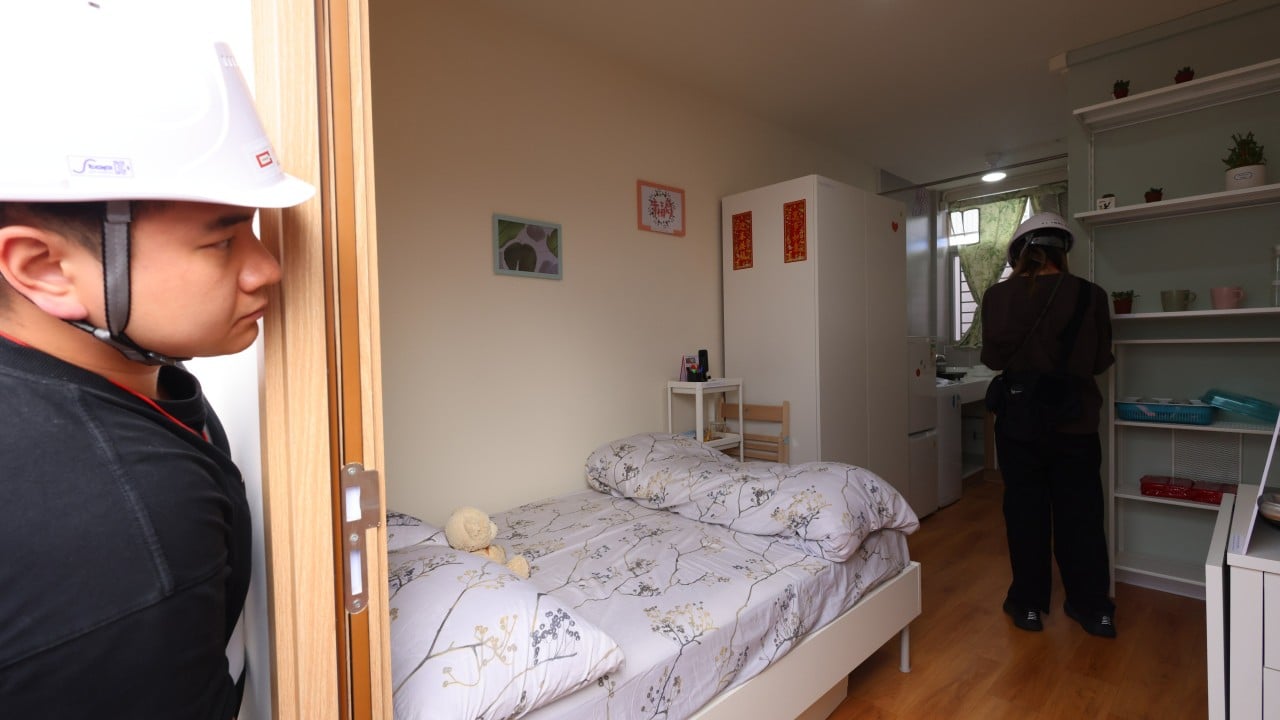Future operator of Hong Kong’s first ‘light public housing’ flats will be paid less if occupancy rate falls below 85%
Hong Kong authorities will reduce the monthly fee paid to the future operator of the first batch of government-built temporary flats if the occupancy rate falls below 85 per cent.
Undersecretary for Housing Victor Tai Sheung-shing on Monday said the occupancy rate was one of the key performance indicators used to monitor the management of the city’s first 2,100 “light public housing” flats and determine financial incentives for the yet-to-be decided operator.
“If [the operator] achieves our targets, it will get more money. We hope it can keep up its performance,” Tai said.

The site on Yau Pok Road in Yuen Long is one of 13 locations where the administration will build a combined 30,000 transitional homes by the 2027-28 financial year to house families that have waited for a permanent public rental flat for at least three years.
The tender process kicked off on Monday last week, with NGOs and property management companies able to submit applications until noon on April 19. The government will assess their proposals, which include operation plans and fees.
Deputy housing secretary Winnie Wong Ming-wai said companies would be able to receive up to an extra 7.5 per cent of the monthly operation fee as the estate approached capacity.
She added that the operator would be rewarded with a further 1 per cent of the monthly fee if more than 90 per cent of tenants used an e-payment solution to settle their rent.
But authorities would reduce the operation fee if the occupancy rate dropped below 85 per cent.
Wong said the government would also regularly look into other key performance indicators covering areas of tenancy and property management, as well as the quality of cleaning, security, social services and facilities.
The operator might also face cuts to their monthly fee for failing to meet these standards, but Wong stopped short of how much money the government could deduct.
Hong Kong lawmaker says no debate over HK$9.8 billion approval for housing bad for optics
Hong Kong lawmaker says no debate over HK$9.8 billion approval for housing bad for optics
“The amount will be able to keep the operator providing basic services to tenants,” Wong said. “It is aimed to be a ‘punishment and reward’ system.”
Housing authorities said the system would be applied at all future light public housing estates, but the occupancy threshold and key performance indicators might differ.
Despite the remote location of the project in the New Territories, undersecretary Tai said he was hopeful over the occupancy rate incentives, which he believed would not discourage potential operators.
He said monthly rent would be HK$740 (US$95) for the one-to-two person flat, and HK$1,420 for the three-to-four person home, adding that the site would feature retail facilities such as laundries, convenience stores and a frozen food shop.
Buses and minibuses heading to the nearest MTR station and public transport interchange would also be provided, Wong added.
She said a few dozen operators had asked for the tender documents and she believed that a number of them would be interested in running the project.
The government aims to announce the tender result in July, allowing time for the operator to prepare for the arrival of the first batch of residents in the first quarter of next year.
But Sze Lai-shan, deputy director of the Society for Community Organisation, an NGO that has built and run its own temporary housing for families in need, voiced concern about the ability to maintain a high occupancy rate.
Hong Kong officials cut estimated cost of 30,000 flats by another HK$1.69 billion
Hong Kong officials cut estimated cost of 30,000 flats by another HK$1.69 billion
She said that many families that had waited for public rental housing for at least five years did not wish to spend money and energy moving to transitional homes as they might have to relocate to a permanent flat soon.
But those who had waited for a relatively shorter time were very eager to move into the temporary housing, she noted, urging the government to open the scheme to all public flat applicants if the occupancy rate was low.
“The government has to be prepared and include those having waited for less than three years,” she said.
She added that operators might find receiving money only once a month a challenge, as some activities could take months to prepare and required upfront expenses.
She said her organisation did not plan to bid for the Yuen Long project as it preferred to focus on the transitional homes it was currently operating in several districts.
The latest average waiting time for a permanent public rental flat stands at 5.6 years. At least 80,000 applicants have been waiting for more than three years.


